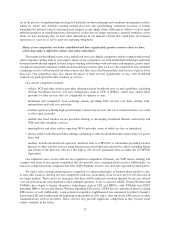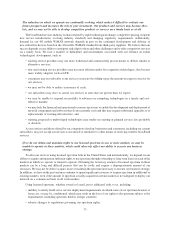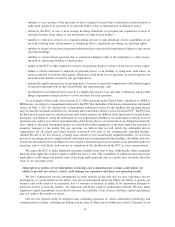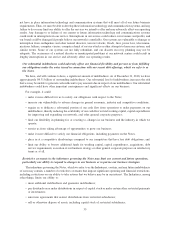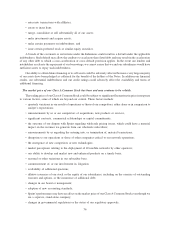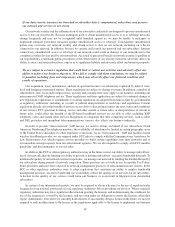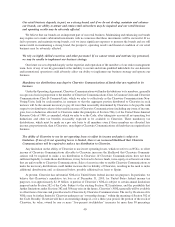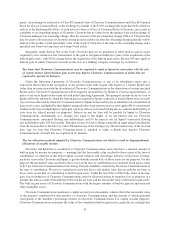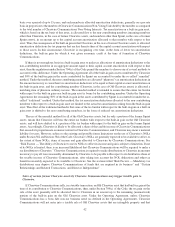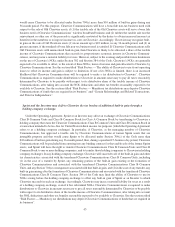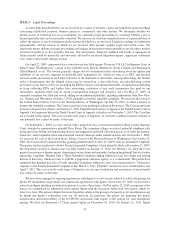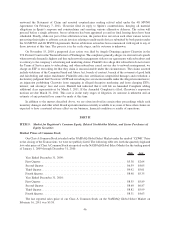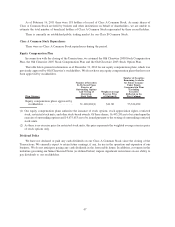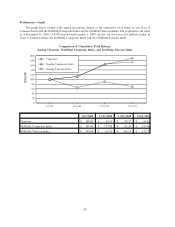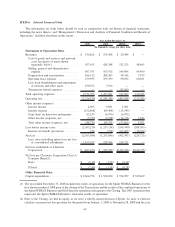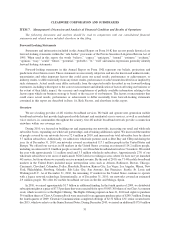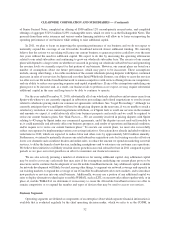Clearwire 2010 Annual Report Download - page 47
Download and view the complete annual report
Please find page 47 of the 2010 Clearwire annual report below. You can navigate through the pages in the report by either clicking on the pages listed below, or by using the keyword search tool below to find specific information within the annual report.basis over a period of up to 15 years, and each member is allocated amortization deductions, generally on a pro rata
basis in proportion to the number of Clearwire Communications Non-Voting Units held by the member as compared
to the total number of Clearwire Communications Non-Voting Interests. Tax amortization on a built-in gain asset,
which is based on the tax basis of that asset, is allocated first to the non-contributing members (meaning members
other than Clearwire, in the case of former Clearwire assets, and members other than Sprint, in the case of former
Sprint assets), in an amount up to the capital account amortization allocated to that member with respect to that
asset. Thus, the consequence of the built-in gain is that Clearwire, in the case of former Clearwire assets, is allocated
amortization deductions for tax purposes that are less than its share of the capital account amortization with respect
to those assets. In this circumstance, Clearwire is recognizing over time, in the form of lower tax amortization
deductions, the built-in gain for which it was given economic credit at the time of formation of Clearwire
Communications.
If there is not enough tax basis in a built-in gain asset to make tax allocations of amortization deductions to the
non-contributing members in an aggregate amount equal to their capital account amortization with respect to that
asset, then the regulations under Section 704(c) of the Code permit the members to choose one of several methods to
account for this difference. Under the Operating Agreement all of the built-in gain assets contributed by Clearwire
and 50% of the built-in gain in the assets contributed by Sprint are accounted for under the so-called “remedial”
method. Under that method, the non-contributing members are allocated “phantom” tax amortization deductions in
the amount necessary to cause their tax amortization deductions to be equal to their capital account amortization on
the built-in gain asset, and the contributing member (Clearwire, in the case of Old Clearwire assets) is allocated a
matching item of phantom ordinary income. The remedial method is intended to ensure that the entire tax burden
with respect to the built-in gain on a built-in gain asset is borne by the contributing member. Under the Operating
Agreement, the remaining 50% of the built-in gain in the assets contributed by Sprint is accounted for under the so-
called “traditional” method. Under that method, the tax amortization deductions allocated to the non-contributing
members with respect to a built-in gain asset are limited to the actual tax amortization arising from the built-in gain
asset. The effect of the traditional method is that some of the tax burden with respect to the built-in gain on a built-in
gain asset is shifted to the non-contributing members, in the form of reduced tax amortization deductions.
The use of the remedial method for all of the Old Clearwire assets, but for only a portion of the former Sprint
assets, means that Clearwire will bear the entire tax burden with respect to the built-in gain on the Old Clearwire
assets, and will have shifted to it a portion of the tax burden with respect to the built-in gain on the former Sprint
assets. Accordingly, Clearwire is likely to be allocated a share of the taxable income of Clearwire Communications
that exceeds its proportionate economic interest in Clearwire Communications, and Clearwire may incur a material
liability for taxes. However, subject to the existing and possible future limitations on the use of Clearwire’s NOLs
under Section 382 and Section 384 of the Code, Clearwire’s NOLs are generally expected to be available to offset, to
the extent of these NOLs, items of income and gain allocated to Clearwire by Clearwire Communications. See
“Risk Factors — The ability of Clearwire to use its NOLs to offset its income and gain is subject to limitation. If use
of its NOLs is limited, there is an increased likelihood that Clearwire Communications will be required to make a
tax distribution to Clearwire.” Clearwire Communications is required to make distributions to Clearwire in amounts
necessary to pay all taxes reasonably determined by Clearwire to be payable with respect to its distributive share of
the taxable income of Clearwire Communications, after taking into account the NOL deductions and other tax
benefits reasonably expected to be available to Clearwire. See the sections titled “Risk Factors — Mandatory tax
distributions may deprive Clearwire Communications of funds that are required in its business” and “Certain
Relationships and Related Transactions, and Director Independence” .
Sales of certain former Clearwire assets by Clearwire Communications may trigger taxable gain to
Clearwire.
If Clearwire Communications sells, in a taxable transaction, an Old Clearwire asset that had built-in gain at the
time of its contribution to Clearwire Communications, then, under Section 704(c) of the Code, the tax gain on the
sale of the asset generally will be allocated first to Clearwire in an amount up to the remaining (unamortized)
portion of the built-in gain on the Old Clearwire asset. Under the Operating Agreement, unless Clearwire
Communications has a bona fide non-tax business need (as defined in the Operating Agreement), Clearwire
Communications will not enter into a taxable sale of Old Clearwire assets that are intangible property and that
42


